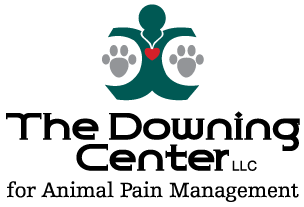Illustrated Articles
-
The estrous cycle, better known as a female cat's heat cycle, consists of several stages; the stage called estrus refers to when the female is sexually receptive. This handout explains the age of onset, the clinical signs of a cat in heat, the length and phases of the heat cycle, as well as the benefits of spaying a female before her first heat cycle.
-
Losing weight can be difficult. While feeding a prescription weight loss diet is certainly a good start in a weight loss program for your cat, it is important to remember that food intake is only one part of the problem; energy expenditure is also significant. Encouraging your cat to exercise by playing with him, putting his food in unusual places so he has to look for it, and making him work for his food (e.g., training, foraging toys) will help.
-
Obesity occurs when a cat consumes more calories than they expend. Therefore, managing obesity in cats often requires both dietary changes and increased exercise/activity. There are several methods for increasing activity in cats, including play, using cat trees and climbing structures, outdoor enclosures, and intentional, active feeding practices. Each of these can be beneficial in promoting weight loss.
-
You’ve probably heard lots of funny cat anecdotes; about how you don’t own them…they own YOU; how they feel superior to everyone, especially dogs; that they expect to be treated like royalty. If you are considering a feline acquisition, first consider this: lots of those remarks are true! This handout explains the other factors to consider in selecting the cat most likely to choose your family, too.
-
Dogs can be amazing family members and greatly enrich our lives! Adding a dog to the family is also a serious commitment, and research before choosing a dog will help set the family and the dog up for success. This handout goes over some factors to consider when selecting a dog.
-
Single, traumatic experiences or repeated exposure to frightening stimuli can cause reactions ranging from mild fear to extreme phobias. The onset of noise sensitivity may occur during different developmental or life stages. Medical conditions such as pain (i.e., ear infection or arthritis) have been associated with noise sensitivity in dogs. Dogs that experience extreme fear and/or phobic behaviors need professional intervention. The first step is to schedule an appointment with your veterinarian.
-
Dogs may become frightened of specific locations due to a traumatic event or negative experience that occurred at the location. Comfortable exposures during a puppy's sensitive socialization period may prevent fear from developing. Treatment includes behavior modification and medication, in some cases.
-
A dog may develop a fear-based response toward people or other animals for a number of reasons, including inadequate socialization, emotional trauma, genetic predisposition, or an underlying medical condition. Dogs indicate fear by using postures such as stiffening, cowering, or moving away. If the trigger remains too close for comfort, a fearful dog can exhibit an aggressive response such as a growl or snap. Dogs that experience intense fear benefit from professional intervention.
-
Fear can be a normal response to a threat, but it can also be maladaptive, contributing to emotional and physical distress. Anxiety is the anticipation of fear and can contribute to chronic stress and behavioral illness. Phobias are intense fear responses to relatively benign triggers. Behavior modification and, in some cases, medications may be used to treat fear, anxiety, and phobias in dogs and cats.
-
Feather loss occurs either because the bird is truly losing feathers or because the bird, or its cage-mate, is picking out its feathers. Feather Destructive Behavior (FDB) is a general classification that describes the many types of damage a bird can do to its own feathers, including feather picking. Feather loss and feather-picking can also be caused by diseases that result in irritation or pain for the bird, or damage to, or inappropriate growth of feathers. Feather loss and feather-picking are complicated problems. For specific advice, your bird should have a thorough work-up by a veterinarian familiar with birds.


